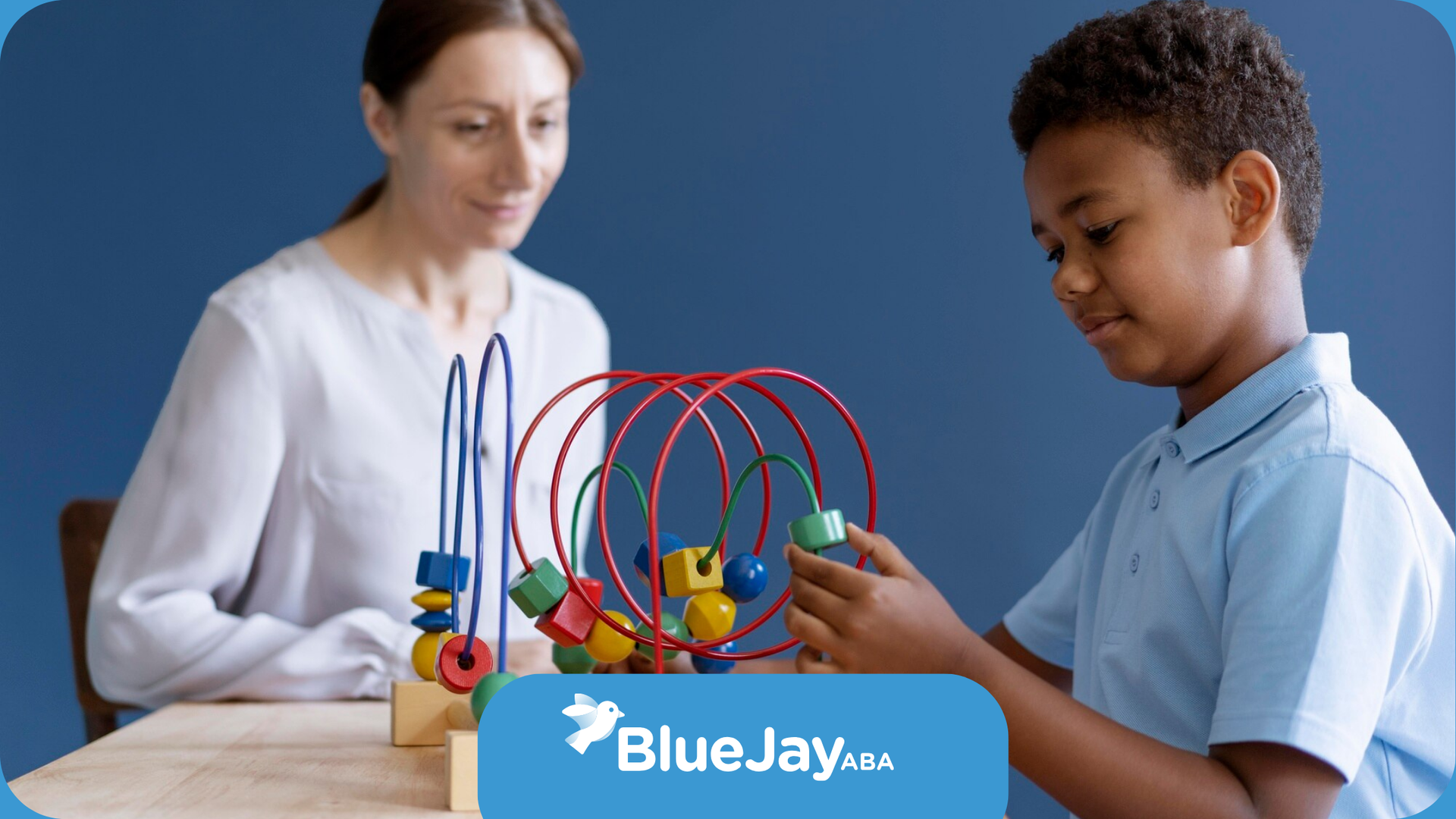Guiding Light: Trusted Autism Resources for Families
Financial Support for Families
Navigating the financial aspects of raising a child with autism can be challenging. Fortunately, there are several programs designed to provide financial assistance to families. Two key programs are Supplemental Security Income (SSI) for Children and Social Security Disability Insurance (SSDI).
Supplemental Security Income (SSI) for Children
The Supplemental Security Income (SSI) for Children program provides financial assistance to help meet the basic needs of children who have a physical or mental disability or who are blind. Children with disabilities may be eligible for SSI if their caregivers have limited income and savings or other resources.
Eligibility for SSI is determined based on the child's disability and the family's financial situation. The program aims to ensure that children with disabilities have access to essential resources and support.
| Criteria | Details |
|---|---|
| Age | Under 18 |
| Disability | Physical or mental disability, or blindness |
| Financial | Limited income and resources |
For more information on how to apply for SSI and the benefits it provides, families can visit the Social Security Administration website.
Social Security Disability Insurance (SSDI)
Social Security Disability Insurance (SSDI) is another financial benefit through Social Security available for adults with a disability that began prior to age 22. SSDI provides benefits based on a parent's Social Security earnings record.
SSDI is designed to support individuals who are unable to work due to their disability. The benefits are calculated based on the parent's work history and contributions to Social Security.
| Criteria | Details |
|---|---|
| Age | Disability began before age 22 |
| Disability | Physical or mental disability |
| Financial | Based on parent's Social Security earnings record |
These financial support programs are essential resources for families with children on the autism spectrum. By understanding and utilizing these benefits, families can better manage the financial challenges associated with raising a child with autism. For additional support and resources, families can explore autism support for parents, autism family therapy, and autism parenting tips.
Autism Organizations and Resources
Interagency Autism Coordinating Committee (IACC)
The Interagency Autism Coordinating Committee (IACC) is a pivotal resource for families navigating the complexities of autism. The IACC website provides a comprehensive list of private and non-profit organizations that offer research funding, support, and information for individuals with autism or other developmental disabilities and their families. This committee plays a crucial role in coordinating efforts across various agencies to enhance the quality of life for those affected by autism.
Autism Speaks' Autism Response Team (ART)
Autism Speaks' Autism Response Team (ART) is a specialized team dedicated to assisting individuals with autism, their families, and caretakers. The ART team is trained to connect families to valuable information, tools, and resources tailored to their specific needs. This personalized support can be invaluable in navigating the challenges associated with autism.
The Autism Response Team (ART) provides assistance in various areas, including community support, peer groups, recreation, and parent support groups. Over 20% of the inquiries received by ART are related to community support, highlighting the importance of these connections for families.
| Resource | Description |
|---|---|
| IACC | Provides a list of organizations offering research funding, support, and information |
| ART | Connects families to information, tools, and resources tailored to their needs |
For additional support and resources, consider exploring our articles on autism support for parents, autism family therapy, and autism sibling support.
Creating an Autism-Friendly Environment
Creating an autism-friendly environment is essential for supporting individuals with autism and promoting their well-being. This involves establishing structured and predictable environments and managing sensory overload and sensory needs.
Structured and Predictable Environments
Children with autism often thrive in structured and predictable environments. Establishing routines and maintaining consistency can help alleviate anxiety and promote a sense of security. Here are some strategies to create a structured environment:
- Visual Supports: Use schedules, picture cards, and timers to provide structure and predictability. These tools help children with autism understand expectations, transitions, and upcoming events, reducing anxiety and promoting independence.
- Consistent Routines: Establish daily routines and stick to them as much as possible. Consistency in activities such as meal times, bedtime, and playtime can help children feel more secure.
- Clear Expectations: Clearly communicate expectations and rules. Use simple language and visual aids to help children understand what is expected of them.
Managing Overload and Sensory Needs
Children with autism often experience sensory overload, which can lead to stress and meltdowns. Managing sensory needs and creating a calming environment can help mitigate these challenges. Here are some strategies to manage sensory overload:
- Quiet Zones: Create quiet zones free from loud noises and bright lights. These spaces can serve as a retreat for children when they feel overwhelmed.
- Tailored Diet: Implement a tailored diet that considers any food sensitivities or preferences. Proper nutrition can play a role in managing sensory needs.
- Communication Support: Support communication development through Augmentative and Alternative Communication (AAC) systems. These tools can help children express their needs and reduce frustration.
| Strategy | Description |
|---|---|
| Visual Supports | Use schedules, picture cards, and timers to provide structure and predictability. |
| Consistent Routines | Establish daily routines and stick to them as much as possible. |
| Clear Expectations | Clearly communicate expectations and rules using simple language and visual aids. |
| Quiet Zones | Create quiet zones free from loud noises and bright lights. |
| Tailored Diet | Implement a tailored diet considering food sensitivities or preferences. |
| Communication Support | Use AAC systems to support communication development. |
Changing the environment can often reduce behavioral episodes for individuals with autism. It is important to expand successful situations, relationships, places, and opportunities while adjusting or avoiding triggers for challenging behavior. Incorporating ways to reduce frustration and anxiety and increase understanding can help create a more successful environment for individuals with autism.
Collaboration and Support
Effective collaboration and support are crucial for families with children on the autism spectrum. Working closely with educators and professionals, as well as utilizing visual supports and communication tools, can significantly enhance the quality of life for children with autism.
Working with Educators and Professionals
Collaboration with educators and professionals is vital to ensure consistency and support for children with autism across different environments. Working closely with teachers, therapists, and other professionals to develop individualized education plans (IEPs) and behavior intervention plans (BIPs) is essential. These plans are tailored to meet the unique needs of each child, providing a structured approach to their education and development.
Key elements of effective collaboration include:
- Regular Communication: Maintaining open lines of communication between parents, teachers, and therapists to discuss progress, challenges, and strategies.
- Consistency: Ensuring that strategies and interventions used at school are reinforced at home and vice versa.
- Training and Workshops: Participating in training sessions and workshops to stay informed about the latest techniques and resources available for supporting children with autism.
Visual Supports and Communication Tools
Visual supports are powerful tools that can help children with autism understand expectations, transitions, and upcoming events. These tools provide structure and predictability, reducing anxiety and promoting independence.
Common visual supports include:
- Schedules: Visual schedules outline the daily routine, helping children anticipate what will happen next.
- Picture Cards: Picture cards can be used to communicate choices, feelings, and actions.
- Timers: Timers help children understand the concept of time and manage transitions between activities.
| Visual Support | Purpose |
|---|---|
| Schedules | Outline daily routines |
| Picture Cards | Communicate choices and actions |
| Timers | Manage transitions |
In addition to visual supports, communication tools such as augmentative and alternative communication (AAC) devices can be beneficial. These devices range from simple picture boards to sophisticated speech-generating devices, enabling non-verbal children to express themselves effectively.
By working collaboratively with educators and professionals and utilizing visual supports and communication tools, families can create a supportive and nurturing environment for their children with autism. This approach not only enhances the child's development but also fosters a sense of understanding and inclusion within the family and community.
Community Support and Involvement
Finding community support and involvement is crucial for families navigating the challenges of autism. It provides a network of resources, emotional support, and opportunities for social engagement, which can significantly enhance the quality of life for individuals with autism and their families.
Finding Community Connections
Connecting with the autism community can lead to increased happiness, improved health, and a better quality of life. It also helps combat social isolation, which is common among individuals with autism. Various organizations and initiatives cater to specific communities within the autism spectrum, ensuring that families can find support that resonates with their cultural and social backgrounds.
- Asperger / Autism Network (AANE): Offers support groups for autistic teens, parents, and adults. They provide both free and fee-based groups, with financial assistance available. Additionally, they host social events and clubs for adults with autism.
- Asian Americans with Disabilities Initiative (AADI): Focuses on the Asian community, providing resources and support for families with autistic members.
- Autism in Black: Dedicated to supporting Black families with autistic children, offering culturally relevant resources and advocacy.
- Grupo SALTO: Serves Latino families with children with disabilities, focusing on autism and providing support in Spanish.
Support Groups and Social Skills Programs
Support groups and social skills programs play a vital role in helping individuals with autism develop essential social skills and build meaningful relationships. These programs are often led by professionals such as speech-language pathologists, occupational therapists, and mental health practitioners.
- The Autism Project (TAP): Offers social skills groups for various age groups, including ages 5-10, pre-teens, teens, and young adults. These groups are designed to help participants develop communication and social interaction skills in a supportive environment.
| Organization | Group | Type of Support |
|---|---|---|
| Asperger / Autism Network (AANE) | Teens, Parents, Adults | Support Groups, Social Events |
| The Autism Project (TAP) | Ages 5-10, Pre-teens, Teens, Young Adults | Social Skills Groups |
| Asian Americans with Disabilities Initiative (AADI) | All Ages | Community-Specific Support |
| Autism in Black | All Ages | Community-Specific Support |
| Grupo SALTO | All Ages | Community-Specific Support |
Participating in these groups can provide families with valuable insights, practical advice, and a sense of belonging.
By engaging with community connections and support programs, families can access a wealth of resources and build a strong support network. This involvement not only benefits the individual with autism but also strengthens the entire family unit.
Financial Planning and Assistance
Medicaid Waivers and ABLE Accounts
Medicaid Waivers, also known as 1915(c) Home and Community Based Services, are available in most states to provide support services and care for individuals with developmental disabilities. These waivers offer coverage for medical treatments, respite care, transportation, in-home support, and more. Families can apply for these waivers through their state's Medicaid office, ensuring that their loved ones receive the necessary care without the financial burden.
The Achieving a Better Life Experience (ABLE) Act of 2014 established ABLE accounts, which are private tax-advantaged savings accounts for families of individuals with disabilities. These accounts allow families to save for long-term expenses without affecting eligibility for public benefits like Medicaid and Supplemental Security Income (SSI). ABLE accounts can be used for a variety of expenses, including education, housing, transportation, and health care.
| Financial Support | Description | Eligibility |
|---|---|---|
| Medicaid Waivers | Coverage for medical treatments, respite care, transportation, in-home support | Individuals with developmental disabilities |
| ABLE Accounts | Tax-advantaged savings for long-term expenses | Families of individuals with disabilities |
Child Tax Credit and Emergency Rental Assistance
The American Rescue Plan increased the Child Tax Credit and expanded its coverage to better assist families who care for children. This credit provides financial relief to families, helping them cover the costs associated with raising children. The expanded Child Tax Credit is fully refundable, meaning that families can receive the full amount even if they owe no federal income tax.
The Emergency Rental Assistance program makes funding available to government entities to assist households that are unable to pay rent or utilities. This program aims to prevent evictions and ensure that families have stable housing during financial hardships. Families can apply for assistance through their local government agencies.
| FInancial Support | Description | Eligibility |
|---|---|---|
| Child Tax Credit | Financial relief for families with children | Families with dependent children |
| Emergency Rental Assistance | Funding to assist with rent and utilities | Households unable to pay rent or utilities |
Conclusion
By understanding and utilizing financial support programs, autism resources, and community connections, families can better navigate the challenges of raising a child with autism. Every child deserves access to the right support, and financial aid can be a crucial lifeline. If you're looking for guidance in your autism journey, Blue Jay ABA is here to help. Contact us today to learn more about our personalized ABA therapy services and how we can support your family.
Sources:
- https://childcare.gov/consumer-education/financial-assistance-for-families
- https://www.ssa.gov/benefits/ssi/
- https://iacc.hhs.gov/resources/organizations/private/
- https://www.autismspeaks.org/resource-guide
- https://www.communicationmatters.org.uk/what-is-aac/
- https://www.autismspeaks.org/financial-autism-support
- https://home.treasury.gov/policy-issues/coronavirus/assistance-for-American-families-and-workers
Need Assistance?
We’re Here to Help
Our expert team is ready to support your child’s development and well-being.
We are committed to offering tailored ABA therapy solutions that promote growth.
Contact us today for Professional ABA Therapy.
Related Posts
MENU
GET IN TOUCH
STAY CONNECTED
Join our newsletter and find out more
NewsletterFooter
We will get back to you as soon as possible
Please try again later








